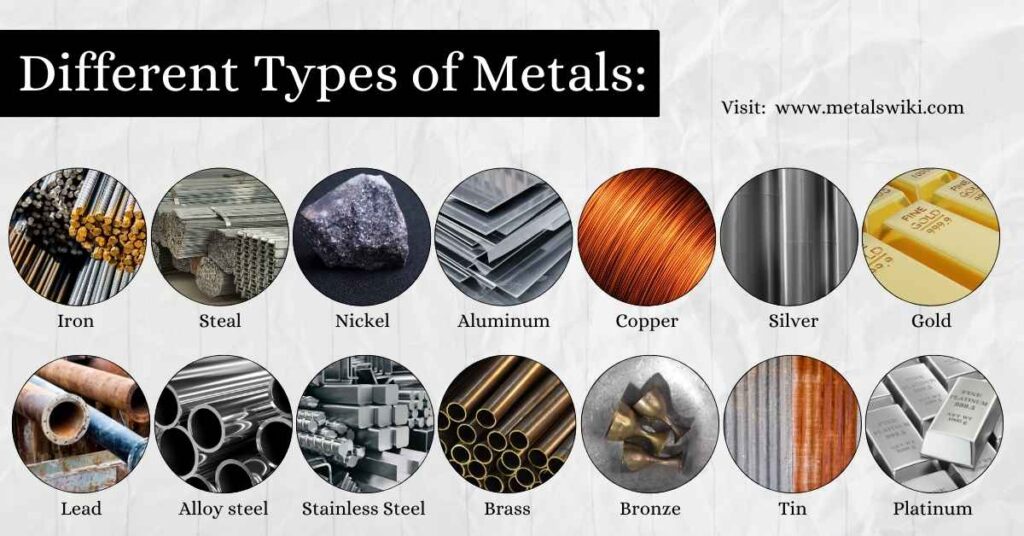Ferrous Metal and Its Types

Introduction!
The word “ferrous” originates from the Latin word “ferrum,” meaning iron. Ferrous metals are metals that contain iron as their primary constituent, possessing more magnetic properties. These metals are known for their strength, durability, and magnetic properties, making them essential in everything from construction and transportation to household items and machinery. Ferrous metals come in several forms, each with its unique mix of strength, hardness, and workability. From everyday construction steel to decorative wrought iron, these iron-based metals shape countless tools, structures, and products we use daily. Let’s explore the most common types of ferrous metals and see what makes each one special.
Ferrous metals are typically magnetic and rust.
Common Types of Ferrous Metals
Ferrous metals come in many forms, but the most common ones are steel, cast iron, wrought iron, and alloy steel. Each type has its specific properties and uses/applications. There are many types of ferrous metals. Some of them are discussed below,
Steel is a common ferrous alloy of iron and carbon, with other elements like manganese, silicon, and chromium added to enhance specific properties. It is made by mixing iron with a small amount of carbon, usually less than 2%. This small amount of carbon makes steel stronger and harder.
Steel is further categorised into three types,
- Low-carbon steel
- Medium carbon steel
- High carbon steel
Uses of steel
- It is used in making bridges
- It is used in car parts and trains
- It is also used in the household for daily use
A Ferrous alloy is a mixture of carbon and steel, with the carbon content exceeding that of steel. Their mixture results in a new brittle material. It is poured into molds when it is very hot and liquid. Once it cools, it becomes very hard, even breaking or cracking if dropped.
Uses of Cast Iron
- It is used in engine parts and machine frames
- It is used in drain pipes
- It is used in maintenance hole covers.
Wrought Iron
A type of iron which contains low carbon content is known as Wrought Iron. Because of the low carbon content, wrought iron becomes soft, ductile, and easy to weld.
Because wrought iron contains a very small amount of carbon, it is bendable in various designs. It has become very popular for decorative items.
It is not easily rusted.
Uses of Wrought Iron
- It is used in stylish gate designs and railings
- It is long-lasting and resists rust better than plain iron
- It is used in railway couplings
- It is widely used in pipe making because of its
- It is used in making nuts and bolts
Alloy Steel
In a simple definition, steel is an alloy of iron and carbon; to enhance its properties, other elements are added, such as molybdenum, manganese, nickel, vanadium and chromium. These metals increase the strength of alloy steel, making it more resistant to rust.
The most common type of alloy steel is stainless steel, which has chromium added to it. This makes it rust-proof and best for kitchenware. Alloy steel is further categorised into different types.
- Stainless steel
- Tool steel
- High-strength low-alloy steel
Uses of Alloy Steel
- It is used in the household, mainly in kitchenware
- It is used in high-strength bridges and buildings
- It is widely used in medical instruments
Most are, especially steel and iron. However, some alloy steels may lose magnetic properties depending on the elements added.
Cast Iron contains more carbon content than steel and also shows more ductility (can bend without breaking). Cast iron has higher carbon, making it hard but brittle.
Absolutely! MetalsWiki is a free educational site for anyone interested in learning more about metals and their applications.
Yes! You can ask anything about your query at any time. Our expert team will provide you with exact data according to your needs.
Ferrous metals do not easily rust, but if they do, you can protect them.
- By painting and coating
- Keep the metal surface clean and dry
- By using stainless steel
Yes, ferrous metals are highly suitable for recycling—in fact, they’re among the most recycled materials in the world.

